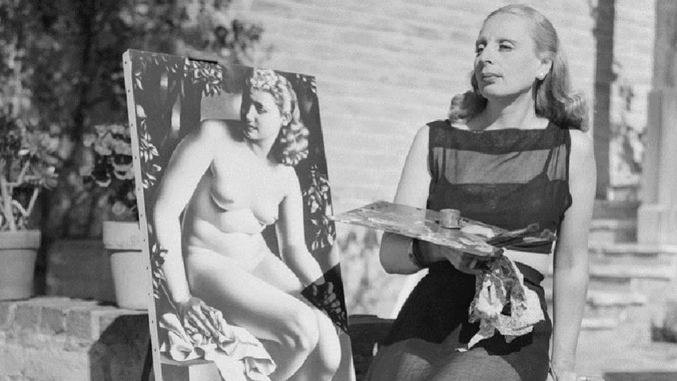Unmistakable and personal, the work of Tamara Lempicka condenses a whole aesthetic stream that stood out in the first third of the last century while she managed to define herself and to mark a style of her own that we all recognise today. The motifs and compositions that the artist chose for her pieces fit perfectly with the Art Deco. Her enveloping volumes, her rounded figures and a clear contrast of colours marked her trajectory, far from the floral resources and the more slender vertical development silhouettes that marked this movement.
Precisely, the triumph of Tamara, already in her early years, and the fact that she was a female artist making her way in a sector so far still dominated by men, contains a halo of mystery and glamour that continues to awaken our curiosity. The life of this painter born in Warsaw in 1898 represents the bohemian spirit that is usually attributed to the artists of the turn of the century, with a highly demanded production and a long waiting list to order a portrait.
Her life is the story of a trip without truce that began with her studies in a boarding school in Switzerland and with family vacations in Italy. The Bolshevik Revolution was a change in her life, when, already married, she became a refugee, passing through Copenhagen, London and Paris, where she settled in 1923. In this context of flight and change, Tamara did not abandon painting, in which had begun in adolescence, and let the influence of the artistic streams of the French capital penetrate in her work. That is why, on occasion, her paintings have been described as a "soft cubism", a style widespread among many artists of the time. In 1925 she opened her first major exhibition in Milan, and in 1927 she won her first prize with the work "Kizette on the balcony" at the International Exhibition of Bordeaux. In the following years, she made the leap to New York, where her career reached the top.
Lempicka's work is enigmatic and unique, like herself, when she openly recognised her bisexuality in a context of social prohibitions. Her style has penetrated deep, even beyond the time when the painter reached her greatest recognition in life and has influenced other later creators who admit admiring her. Today, her work visits Madrid at the Gaviria Palace, 86 years after Tamara herself passed through our country on one of her many trips to Europe.
Source: https://www.art-madrid.com
Related Publications

How Harumi Yamaguchi invented the modern woman in Japan
March 16, 2022













